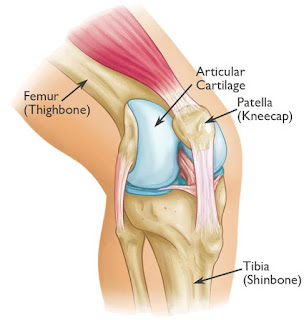CASE PRESENTATION OF TYPE COLLES’ FRACTURE
CASE PRESENTATION OF
TYPE COLLES’ FRACTURE
INTRODUCTION:
This
(Colles’ Fx) kind of fracture is very common. In fact, the radius is the most
commonly broken bone in the arm. The break usually happens when you fall and
land on your outstretched hands. It can also happen in any other types of
fracture. Sometimes, the other forearm bone (ulna) is also broken. When this
happens, it is called as a distal ulna fracture.
This
fracture was described by an Irish surgeon and anatomist, Abraham Colles, in 1814;
hence the name, Colles’ fracture.
ANATOMY:
CLASSIFICATION:
Frykman classification is based on joint involvement (radiocarpal
and/or radioulnar) +/- ulnar styloid fracture.
AO classification:
Ø Patient
- ‘X’
Ø Age
- 63 years/ Female
Ø Date
of Admission: 10/01/2019
Ø Date
of Surgery: 16/01/2019
CHIEF COMPLAINT:
The patient had pain, swelling, and tenderness over the left distal part of the
forearm (wrist). The patient had restricted left wrist movements and inability to use
since fall (08/01/2019).
HISTORY
OF PRESENT ILLNESS:
The patient had restricted left distal
part of forearm (wrist) movements and inability to use left distal part of forearm
since fall. The patient gave a history of slip and fall in the street. Since
then patient complaints of pain, swelling, range of movements restricted.
After the injury patient went to
the nearby hospital, treated conservatively (analgesics and cast). The patient had no relief, came to our hospital
for further management. The patient was examined by traumatologist and
got admitted in the traumatology
department. X-ray was taken and it showed
a communited fracture distal radius and
fracture styloid process with displacement.
v Previous
Injury: The patient gave a history
of brain injury after an accident in 2017.
v Developmental
History: No any developmental histories
v Drug
History: No known drug allergies. The patient is on treatment
for CVS.
v Past
Medical History: The patient gave a past medical history of Ischemic heart
diseases, Cardiosclerosis, Arterial Hypertension II, Risk III.
No DM; No Asthma; No thyroid disease.
v Past
Surgical History: Removal of the tumor from the parietal bone in
2017. No, any blood transfusion.
ON EXAMINATION:
Patient is conscious, oriented.
Vital Signs:
· BP
– 130/80 mmHg
· PR
– 80/min
· SPO2
– 98%
LOCAL EXAMINATION:
· Pain
and Swelling over the left distal part of the forearm
are present.
· Tenderness
and Crepitus over the left distal part of the forearm
are present.
· The range of Motion of left distal part of the
forearm is restricted.
· Any
attempted movements painful.
· Active
finger movements present.
· Distal
pulse present.
X-RAY FINDING:
On 08/01/2019:
On 10/01/2019 (after getting admitted in
our hospital with cast):
TREATMENT:
There are different types of treatments for this kind
of fractures.
Ø Nonoperative – Cast.
Ø External
Fixator.
Ø Closed
reduction – K-wire fixation with cast/ex-fix. (operative)
Ø Open
reduction internal fixation (ORIF) – Palmar bridge plate.
For this patient,
we chose ORIF with plate and screws (operative method) because
· Unacceptable
shortening / dorsal inclination.
· Extensive
metaphyseal comminution
PREPARATION:
Patient in Supine position: Position
the patient supine and place the forearm table.
SKIN INCISION:
Palmar Approach:
POSTOPERATIVE
X-RAY:
AP view: LAT view:
CLASSIFICATION:
Ø According
to AO Trauma Classification – 23.A3
Ø According
to Frykman Classification – 2
CONCLUSION:
Ø Early
surgery, good anatomical reduction, and
internal fixation help to recover the
full range of movements. POP cast has been given to stabilise the ulnar styloid process
Ø Stability
is RESTORED.
--THE END--



















Nice Post!
ReplyDeleteThanks for sharing the great information with us.
If you are facing any kind of spine and ortho pain problem and you want to cure your problem by consulting with the best Ortho Doctor in Ludhiana then you can come to Kalyan Hospital.
physiotherapy 2020
ReplyDeleteAmazing post !! This is so informative blog. Keep sharing. if you are looking for herniated disc surgery. Check the Link.
ReplyDeletethank you